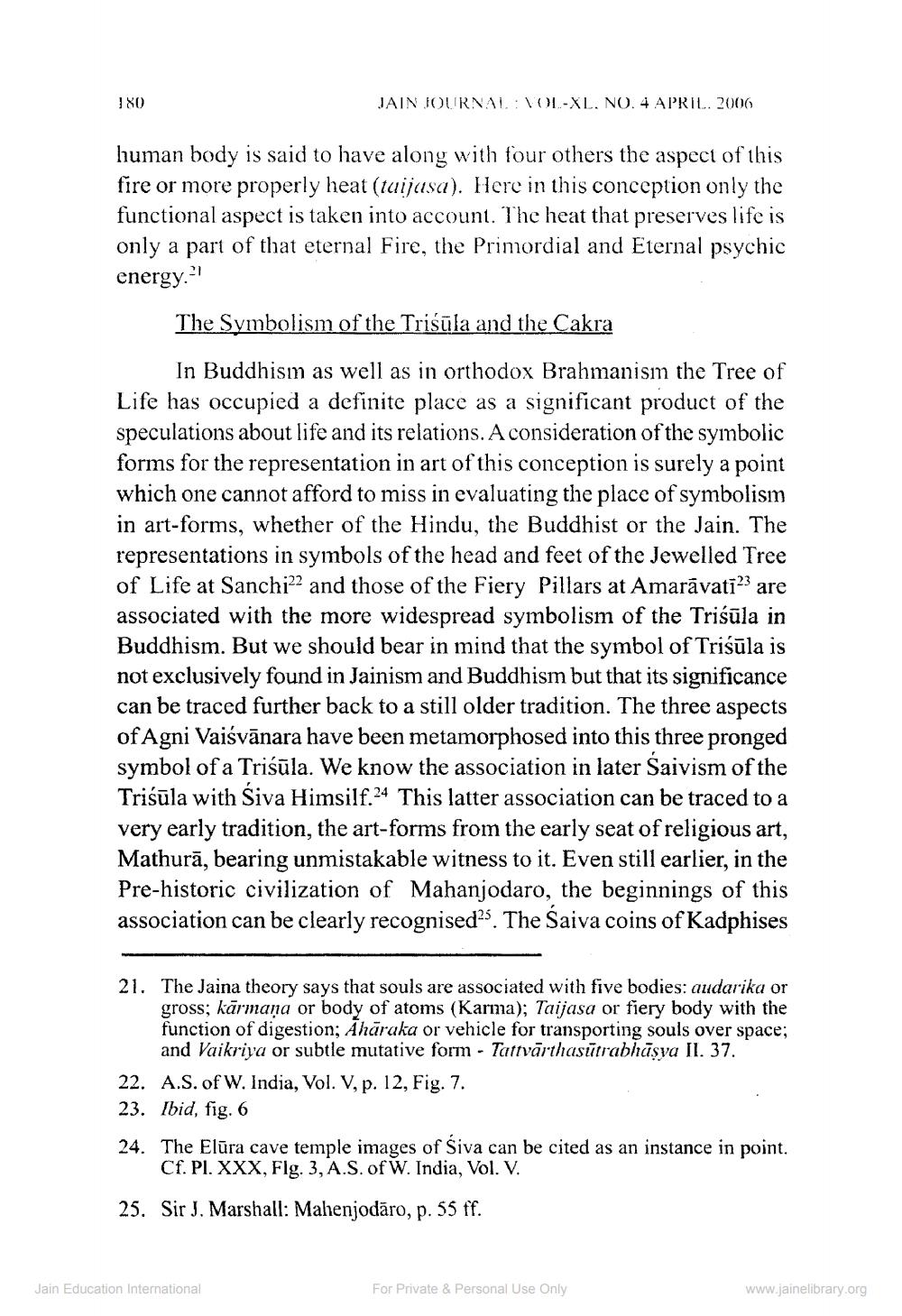________________
180
JAIN JOURNAL : VOL-XL, NO. 4 APRIL 2006
human body is said to have along with four others the aspect of this fire or more properly heat (tuijasa). Here in this conception only the functional aspect is taken into account. The heat that preserves life is only a part of that eternal Fire, the Primordial and Eternal psychic energy
The Symbolism of the Triśūla and the Cakra
In Buddhism as well as in orthodox Brahmanism the Tree of Life has occupied a definite place as a significant product of the speculations about life and its relations. Aconsideration of the symbolic forms for the representation in art of this conception is surely a point which one cannot afford to miss in evaluating the place of symbolism in art-forms, whether of the Hindu, the Buddhist or the Jain. The representations in symbols of the head and feet of the Jewelled Tree of Life at Sanchi?? and those of the Fiery Pillars at Amarāvatiare associated with the more widespread symbolism of the Triśūla in Buddhism. But we should bear in mind that the symbol of Trisūla is not exclusively found in Jainism and Buddhism but that its significance can be traced further back to a still older tradition. The three aspects of Agni Vaiśvānara have been metamorphosed into this three pronged symbol of a Triśūla. We know the association in later Saivism of the Triśūla with Siva Himsilf. 24 This latter association can be traced to a very early tradition, the art-forms from the early seat of religious art, Mathurā, bearing unmistakable witness to it. Even still earlier, in the Pre-historic civilization of Mahanjodaro, the beginnings of this association can be clearly recognised?". The Saiva coins of Kadphises
21. The Jaina theory says that souls are associated with five bodies: audarika or
gross; kārmaņa or body of atoms (Karma); Taijasa or fiery body with the function of digestion; Ahāraka or vehicle for transporting souls over space;
and Vaikriya or subtle mutative form - Tattvārthasūtrabhāsva II. 37. 22. A.S. of W. India, Vol. V, p. 12, Fig. 7. 23. Ibid, fig. 6
24. The Elūra cave temple images of Siva can be cited as an instance in point.
Cf. Pl. XXX, Fig. 3, A.S. of W. India, Vol. V.
25. Sir J. Marshall: Mahenjodāro, p. 55 ff.
Jain Education International
For Private & Personal Use Only
www.jainelibrary.org




